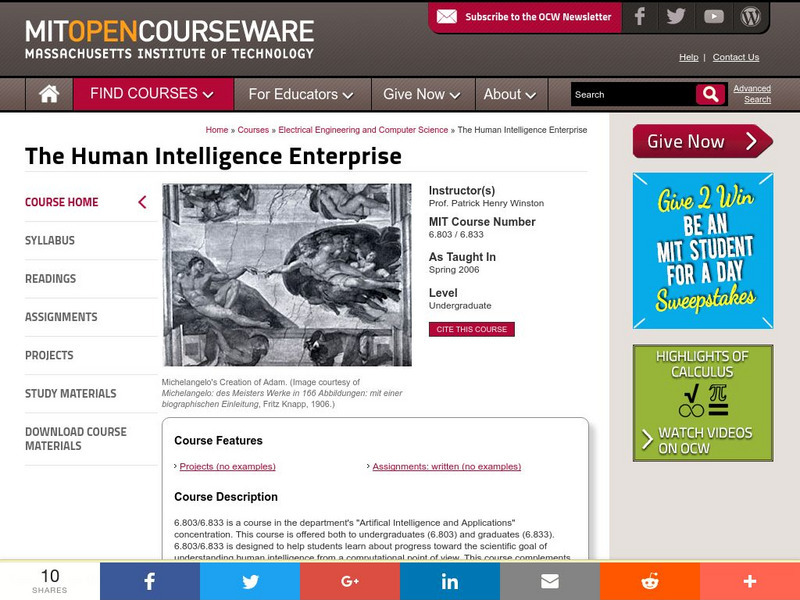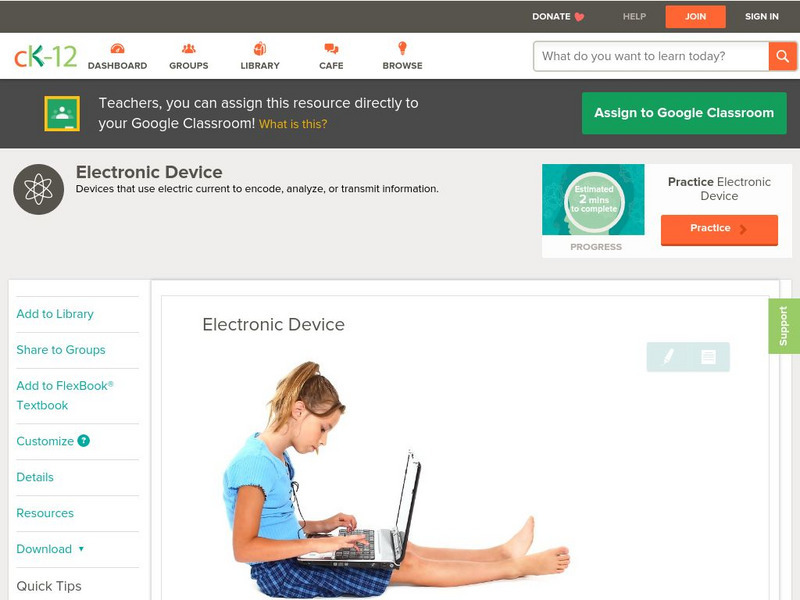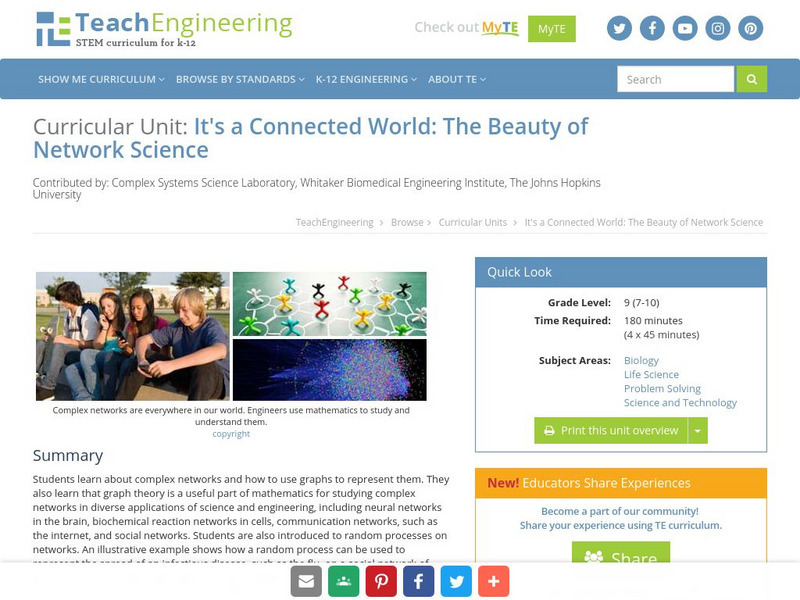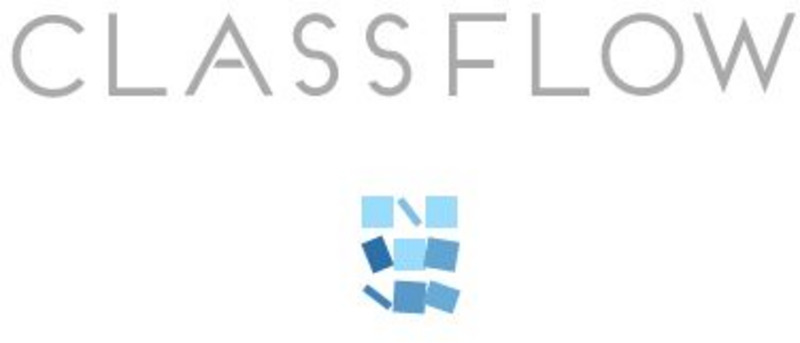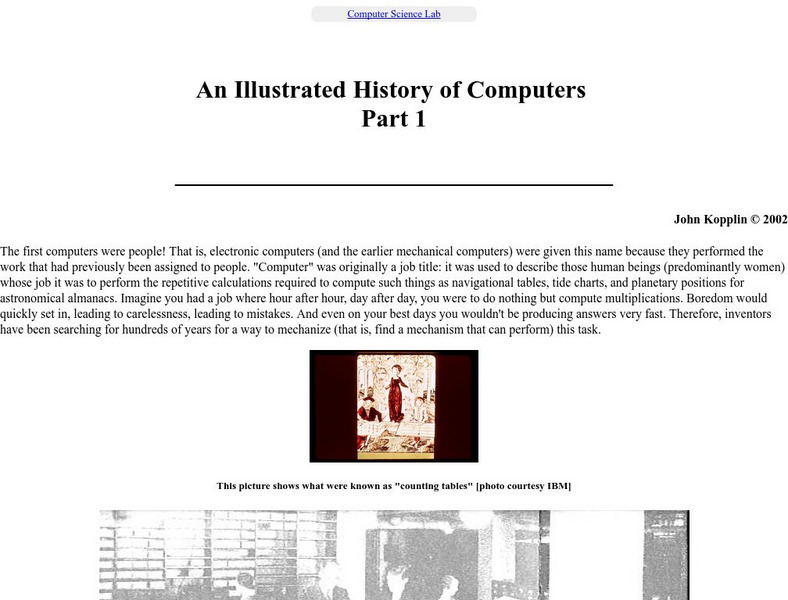Hi, what do you want to do?
Goodwill
Gcf Global: Computer Basics: Basic Parts of a Computer
Learn about the basic parts of a desktop computer.
ClassFlow
Class Flow: Parts of the Computer
[Free Registration/Login Required] This flipchart provides an introduction to computers at the elementary grade level.
Khan Academy
Khan Academy: What Are the Parts of a Computer?
Each computer receives input from a variety of devices, processes that data with the CPU and memory, and sends results to some form of output. This diagram visualizes that flow.
Khan Academy
Khan Academy: Input & Output Devices
Become familiar with the parts of the computer that we interact with daily: the input and output devices.
Massachusetts Institute of Technology
Mit: Open Course Ware: The Human Intelligence Enterprise
This course is part of the artificial intelligence studies at MIT. The course is designed to help students learn about the scientific goal of understanding human intelligence from a computational point of view.
Goodwill
Gcf Global: Computer Basics: Inside a Computer
Master some of the basic terminology and understand what goes on inside a computer.
Khan Academy
Khan Academy: Computer Components
Check your understanding of the flow inside the computer, from the input to the CPU and memory and back to the output, in this set of practice questions designed for AP Computer Science Principles students.
Alabama Learning Exchange
Alex: Label It!
During this lesson, students will work to create word cards or "labels" to identify parts of the computer. Students will use basic letter sounds to help spell the correct words. Students will demonstrate their new knowledge by labeling...
CK-12 Foundation
Ck 12: Physical Science: Electronic Device
[Free Registration/Login may be required to access all resource tools.] Explains what an electronic device is and discusses the computer.
Computer History Museum
Computer History Museum: An Overview of the History of the Software Industry
The software industry is a major part of the world economy. This site traces the relatively short history of the software industry, from the 1950s through the 1980s.
TeachEngineering
Teach Engineering: Graphing the Spread of Disease
Students simulate disease transmission by collecting data based on their proximity to other students. One option for measuring proximity is by having Bluetooth devices "discover" each other. After data is collected, students apply graph...
Other
Beanz: How to Build a Computer
Building your own computer is a great way to not only save money, and get more processing power, but also to learn about the less obvious parts of software programming.
University of Cambridge
University of Cambridge: Nrich: Game Chocolate Bars
Use this game to practice finding how many of the chocolate bars (or parts) you will get when you share them with your friends at the party. If you don't figure it out correctly the computer will tell why.
TeachEngineering
Teach Engineering: It's a Connected World: The Beauty of Network Science
Students learn about complex networks and how to use graphs to represent them. They also learn that graph theory is a useful part of mathematics for studying complex networks in diverse applications of science and engineering, including...
ClassFlow
Class Flow: Computer
[Free Registration/Login Required] This flipchart helps students identify the parts of a computer in order to understand basic terms and terminology used in technology integration.
TeachEngineering
Teach Engineering: Hearing: How Do Our Ears Work?
Students learn about the anatomy of the ear and how the ears work as a sound sensor. Ear anatomy parts and structures are explained in detail, as well as how sound is transmitted mechanically and then electrically through them to the...
Khan Academy
Khan Academy: Logic Circuits
Check your understanding of how simple logic circuits of AND/OR/NOT gates can output 0 or 1 based on inputs.
Other
Robotc: Thinking About Programming: Programmer & Machine [Pdf]
In this lesson, students learn about the roles of the programmer and the robot, and how the two need to work together in order to accomplish their goal. Students also understand logic behind the robot's actions, and break a big plan down...
Khan Academy
Khan Academy: Ap Computer Science Principles
A basic introductory course to computer science. Covers what computers are, their parts, and what they do; what the Internet is and how it works; some basic programming concepts; algorithms; data analysis; and global impact of computers...
Code.org
Code Studio: Computer Programming: Course E
Start coding with algorithms, loops, conditionals, and events and then you'll move on functions. In the second part of this course, design and create a capstone project you can share with your friends and family.
Other
An Illustrated History of Computers Part 1
This site describes the history of computer innovations beginning with early mechanical devices to the electronic devices of the 20th century.
Code.org
Code Studio: Computer Programming: Course F
Learn to use different kinds of loops, events, functions, and conditionals. Investigate different problem-solving techniques and discuss societal impacts of computing and the internet. In the second part of this course, design and create...
New Zealand Ministry of Education
Nz Ministry of Education: Postcards From My Planet
In this lesson, learn about the features of postcards. Then they design their own postcard making the visual part (by hand or computer) fit the message being sent. They then address and mail their card (with the help of the teacher).









